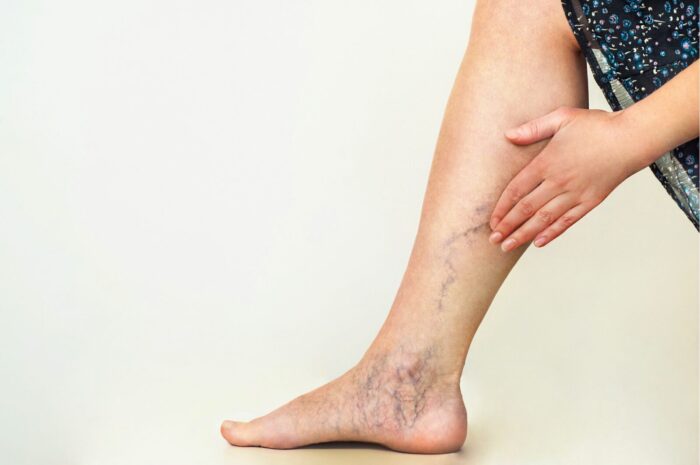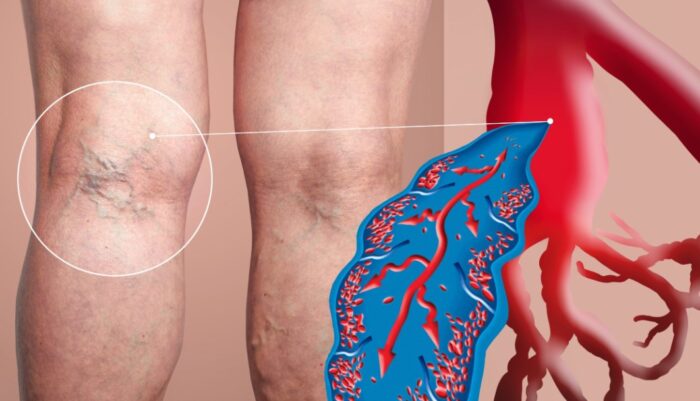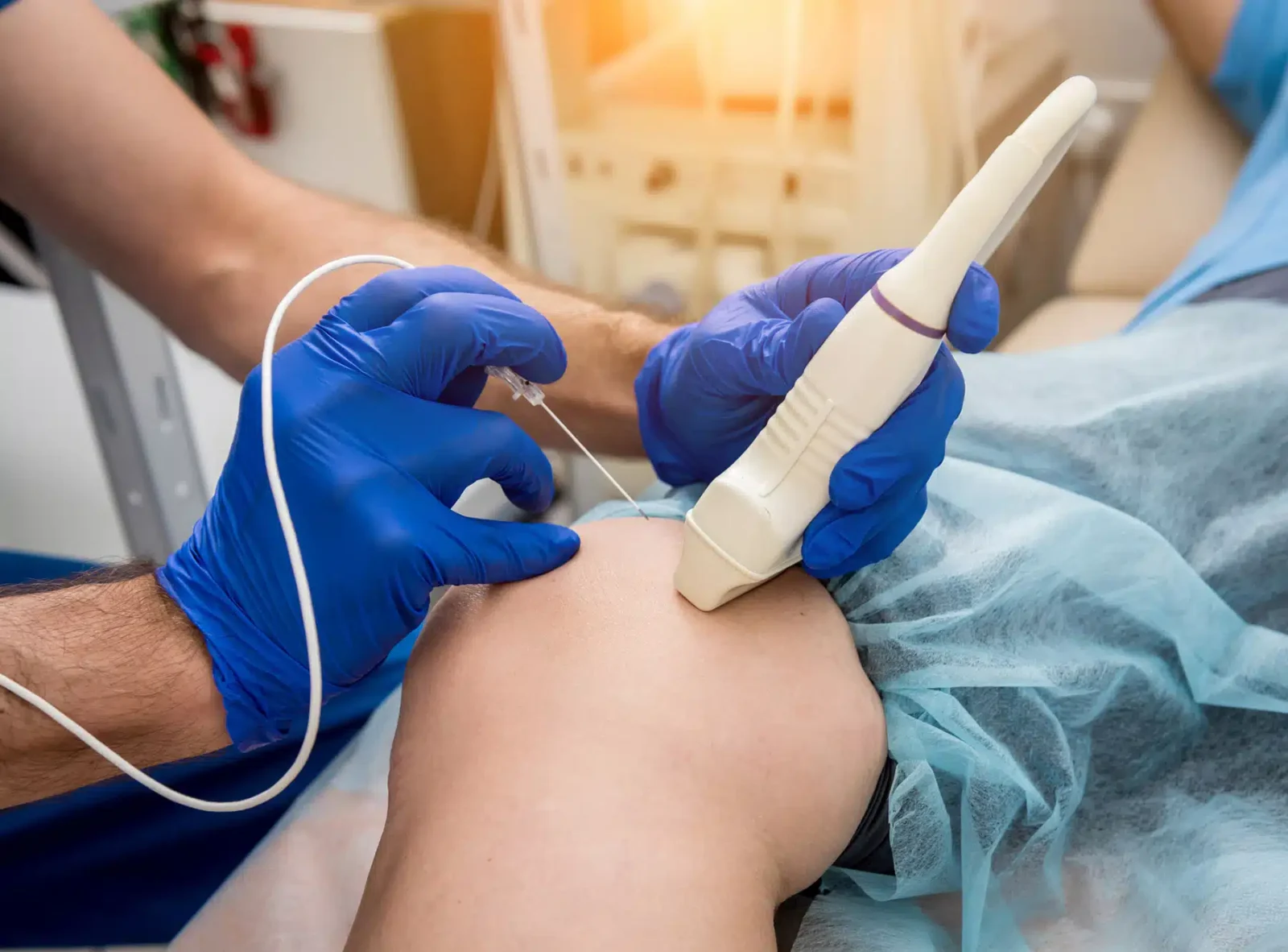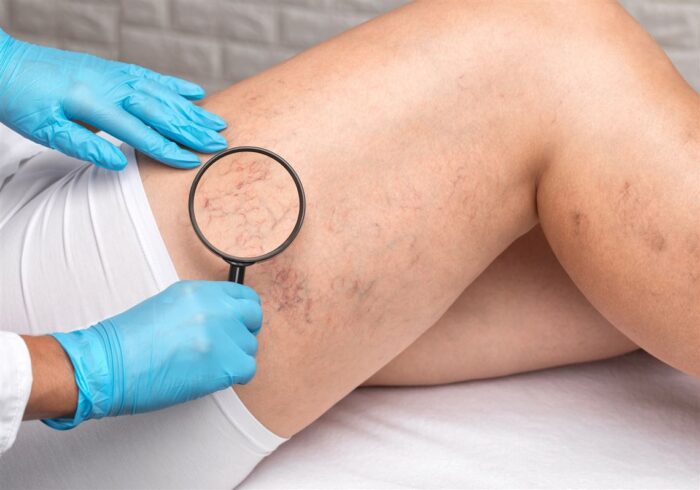
Vein disorders, although often overlooked, can significantly impact one’s quality of life. From discomfort to aesthetic concerns, these conditions warrant attention and effective treatment.
Understanding the plethora of Vein treatment options available is essential for individuals seeking relief. This comprehensive guide will explore various vein solutions to help you make informed decisions about your health.
Different Vein Disorders ─ Causes and Symptoms

Vein disorders, while varied, share a common thread—they affect the circulatory system and can significantly impact quality of life. Understanding the nuances of these conditions, their origins, and their manifestations is crucial for timely diagnosis and treatment.
Varicose Veins
- Causes ─ Varicose veins occur when veins become enlarged, dilated, and overfilled with blood. This condition often arises due to faulty valves in the veins, which fail to facilitate the one-way flow of blood toward the heart. Risk factors include age, gender, genetics, obesity, pregnancy, and prolonged standing.
- Symptoms ─ Visibly twisted and bulging veins, usually on the legs, characterize this disorder. Symptoms include aching pain, heaviness, itching, swelling, and muscle cramping. In severe cases, skin ulcers near the ankle can indicate a serious vascular disease requiring immediate attention.
Spider Veins
- Causes ─ Spider veins are similar to varicose veins but smaller and closer to the surface of the skin. They can be caused by the backup of blood, hormone changes, exposure to the sun, and injuries.
- Symptoms ─ These veins are easily identifiable by their web-like appearance, typically found on the legs and face. While usually a cosmetic issue, they can occasionally cause discomfort.
Deep Vein Thrombosis (DVT)
- Causes ─ DVT is a serious condition where a blood clot forms in a deep vein, usually in the legs. Risk factors include prolonged immobility, certain medical conditions, smoking, obesity, pregnancy, and hormone therapy.
- Symptoms ─ DVT can manifest as swelling, pain, tenderness, and redness of the affected limb. However, it can occur without noticeable symptoms. DVT requires urgent medical attention as it can lead to pulmonary embolism, a potentially fatal complication.

Chronic Venous Insufficiency (CVI)
- Causes ─ CVI occurs when the venous wall and/or valves in the leg veins are not working effectively, making it hard for blood to return to the heart from the legs. Causes include a history of DVT, varicose veins, obesity, pregnancy, and a sedentary lifestyle.
- Symptoms ─ Symptoms include swelling in the legs or ankles, pain that worsens when standing and decreases when elevating the legs, leg cramps, itching, and skin changes. In advanced stages, leg ulcers may develop.
Superficial Venous Thrombosis (SVT)
- Causes ─ SVT refers to a blood clot in a superficial vein, typically in the leg. Causes include vein injury, prolonged inactivity, or a medical condition that affects blood clotting. It’s less serious than DVT but can cause complications if not treated.
- Symptoms ─ The main symptoms are skin redness over the vein, warmth, tenderness, and swelling along the course of the vein.
Post-Thrombotic Syndrome (PTS)
- Causes ─ PTS is a complication that can follow DVT, resulting from damage to the veins that were affected by the blood clot. This damage leads to chronic problems due to poor blood flow in the affected limb.
- Symptoms ─ Symptoms include swelling, pain, discoloration, and scaling in the affected limb. In severe cases, venous ulcers can develop.
Treatment Options
1. Sclerotherapy
Sclerotherapy is a minimally invasive treatment widely employed for addressing spider and small varicose veins. This process entails injecting a specialized solution directly into the affected veins, prompting them to collapse and gradually diminish over time.
Its outpatient nature means patients can undergo sclerotherapy without the need for hospitalization, and the procedure itself boasts minimal downtime.
This combination of effectiveness and convenience renders sclerotherapy a popular choice among individuals seeking to alleviate aesthetic and physical discomfort because of vein issues.
2. Endovenous Laser Ablation (EVLA)
Endovenous Laser Ablation (EVLA) is a cutting-edge solution for addressing more prominent varicose veins. This innovative procedure harnesses the power of laser energy to precisely target and seal off the problematic vein, facilitating a smoother blood flow redirection towards healthier veins.
Renowned for its remarkable efficacy, EVLA boasts an impressive success rate in resolving varicose vein issues while ensuring minimal patient discomfort and downtime. Its precision and effectiveness make it a preferred choice among individuals seeking long-lasting relief from the pain and unsightliness associated with varicose veins.
3. Radiofrequency Ablation (RFA)

Radiofrequency Ablation (RFA) presents a minimally invasive approach akin to EVLA in treating varicose veins. Rather than employing laser energy, RFA generates heat, effectively sealing off the problematic vein. Patients generally tolerate RFA well, experiencing few side effects, if any.
This procedure stands out for its ability to deliver exceptional results while minimizing discomfort and downtime. Its precise application of radiofrequency energy ensures targeted treatment, contributing to its efficacy in addressing varicose vein concerns.
4. Ambulatory Phlebectomy
Ambulatory Phlebectomy stands as a surgical solution designed specifically for the removal of prominent varicose veins that cannot be addressed through less invasive methods like sclerotherapy or laser treatments.
By making small incisions in the skin, this procedure effectively targets more prominent veins, relieving discomfort and enhancing the appearance of the legs. Administered under local anesthesia, Ambulatory Phlebectomy ensures minimal discomfort during the procedure, with patients typically experiencing a swift recovery period.
5. Compression Therapy
Compression therapy is a non-invasive approach to enhance blood circulation and diminish swelling in the legs. It entails the utilization of specialized compression stockings meticulously designed to exert gentle pressure on the legs.
Although not considered a permanent fix, compression therapy serves as an effective method for alleviating symptoms associated with vein issues. It is often suggested either as a conservative treatment on its own or as a complementary measure alongside other medical procedures.
Compression therapy plays a pivotal role in enhancing the overall well-being and comfort of individuals affected by venous conditions by facilitating improved blood flow and mitigating discomfort.
Choosing the Right Treatment

When confronted with the choice of vein treatment, it is imperative to seek advice from a skilled healthcare professional.
Their expertise allows a thorough evaluation of your condition, considering aspects such as vein size, severity, and underlying health concerns. This evaluation forms the foundation for suggesting a treatment plan that best fits your requirements.
Additionally, maintaining an open dialogue with your healthcare provider empowers you to voice your preferences and address any apprehensions, guaranteeing you complete understanding and confidence in the chosen treatment path.
This collaborative approach empowers you to make confident decisions regarding your vein health and overall well-being.
Conclusion
Vein disorders are common yet treatable conditions that can significantly impact one’s well-being. By familiarizing yourself with the various vein treatment options available, you can take proactive steps toward improving your vascular health and quality of life.
Whether you opt for minimally invasive procedures like sclerotherapy and laser ablation or surgical interventions like ambulatory phlebectomy, seeking timely treatment is critical to achieving optimal outcomes. It is imperative to seek guidance from a certified healthcare professional to ascertain the most appropriate approach tailored to your unique requirements.











